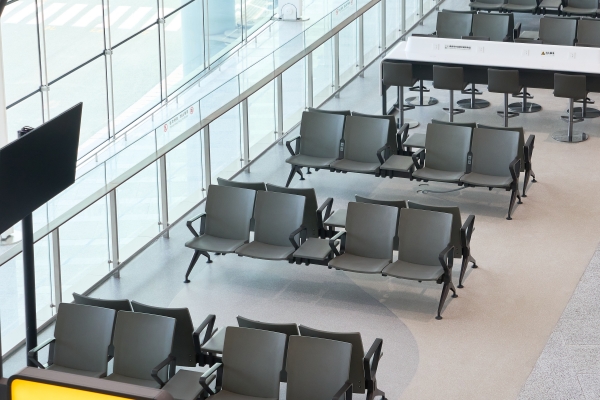In high-traffic venues like high-speed rail stations and airports, the durability and maintenance costs of waiting chairs are top priorities for operators. Tens of thousands of daily uses, complex climate conditions, and cleaning and disinfection requirements all place extremely high demands on the chairs. So, what kind of waiting chairs at high-speed rail stations or airports can be designed to be virtually maintenance-free for ten years?
1. Structural Design Determines Service Life
A waiting chair that is "10 years maintenance-free" in public spaces must first focus on its structural design.
High-quality metal waiting chairs typically utilize fully welded, one-piece molding or modular assembly to prevent problems such as loose screws and broken connectors.
For airport terminal seating, load-bearing capacity is even more crucial: each seat must support at least 250kg to withstand frequent use without deformation.
2. Material Selection is Key: The Advantages and Disadvantages of Stainless Steel and Aluminum Alloy
Common stainless steel and aluminum alloy waiting chairs on the market exhibit varying corrosion resistance.
304 stainless steel waiting chairs: Highly resistant to oxidation and moisture, suitable for coastal and airport use.
Aluminum alloy waiting chairs: Lightweight and easy to transport, but the quality of the surface oxide treatment should be carefully considered.
Choosing the right material not only ensures a long-lasting, pristine appearance but also directly impacts subsequent maintenance cycles.

3. Surface Treatment Affects Cleaning Frequency
Over extended use, stains, fingerprints, and detergent residue often make waiting room chairs difficult to maintain.
Waiting room chairs finished with electrostatic spraying, anodizing, or brushed finishes not only offer a premium look but also effectively resist fingerprints and stains.
For environments like airport waiting areas that require frequent disinfection, anti-corrosion treatment is crucial for extending the chair's lifespan.
4. Modular Design Reduces Maintenance Ease
Excellent airport waiting chair manufacturers consider ongoing maintenance in their designs.
Modular design allows individual seats, armrests, or legs to be replaced independently without affecting the overall structure, significantly reducing repair time and labor costs.
This "partial replacement" approach has become mainstream in high-speed rail stations, hospitals, airports, and other locations.
5. The Secret to 10 Years of Maintenance-Free Service: A Combination of Quality and Experience
"Ten years of maintenance-free service" is no myth; it stems from systematic product design and rigorous production processes.
From raw material testing, welding precision, surface painting, to rust-proofing testing, every step determines the longevity of your waiting chair.
Choosing an experienced waiting chair manufacturer means you're choosing a longer product lifecycle and lower operating costs.